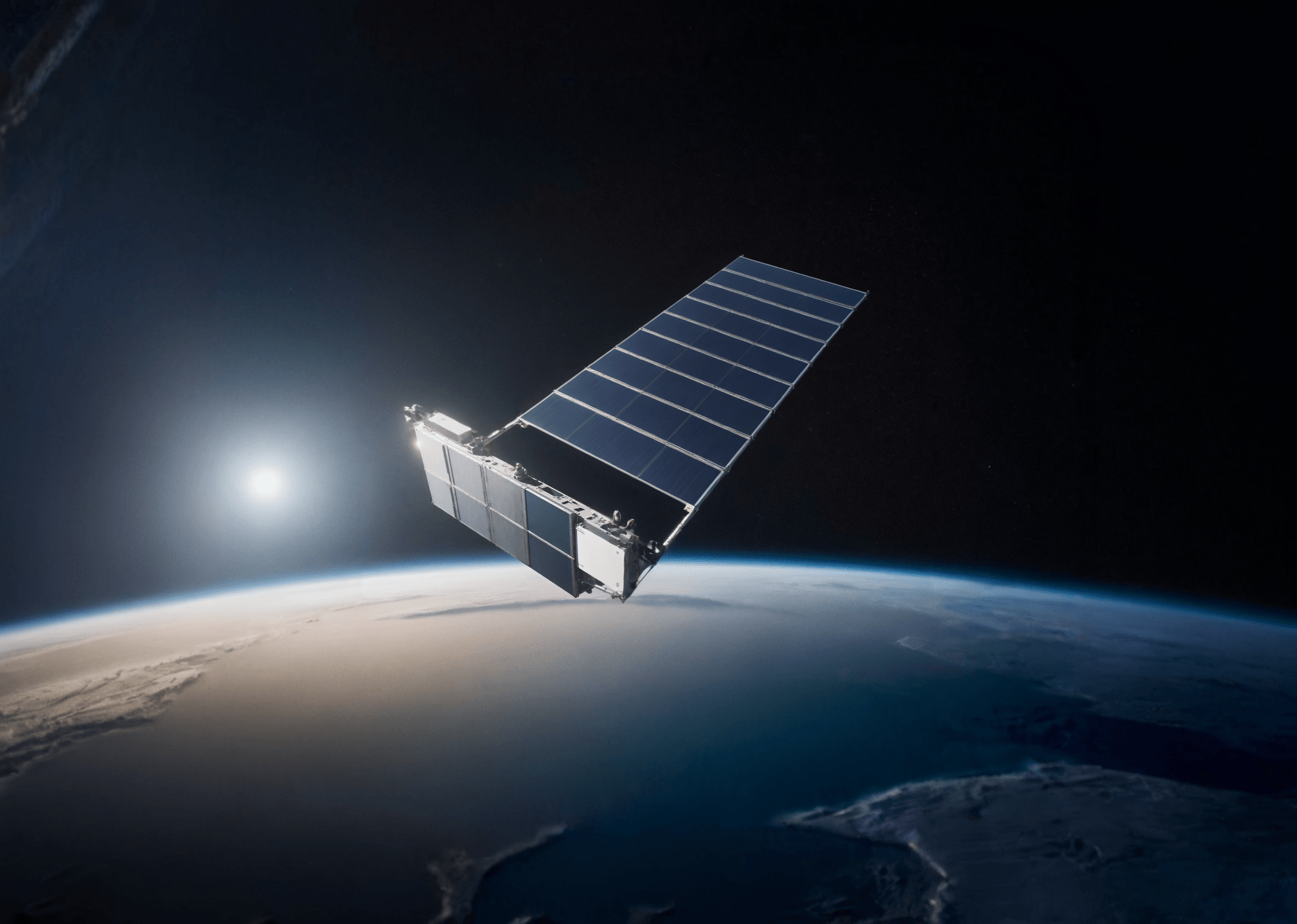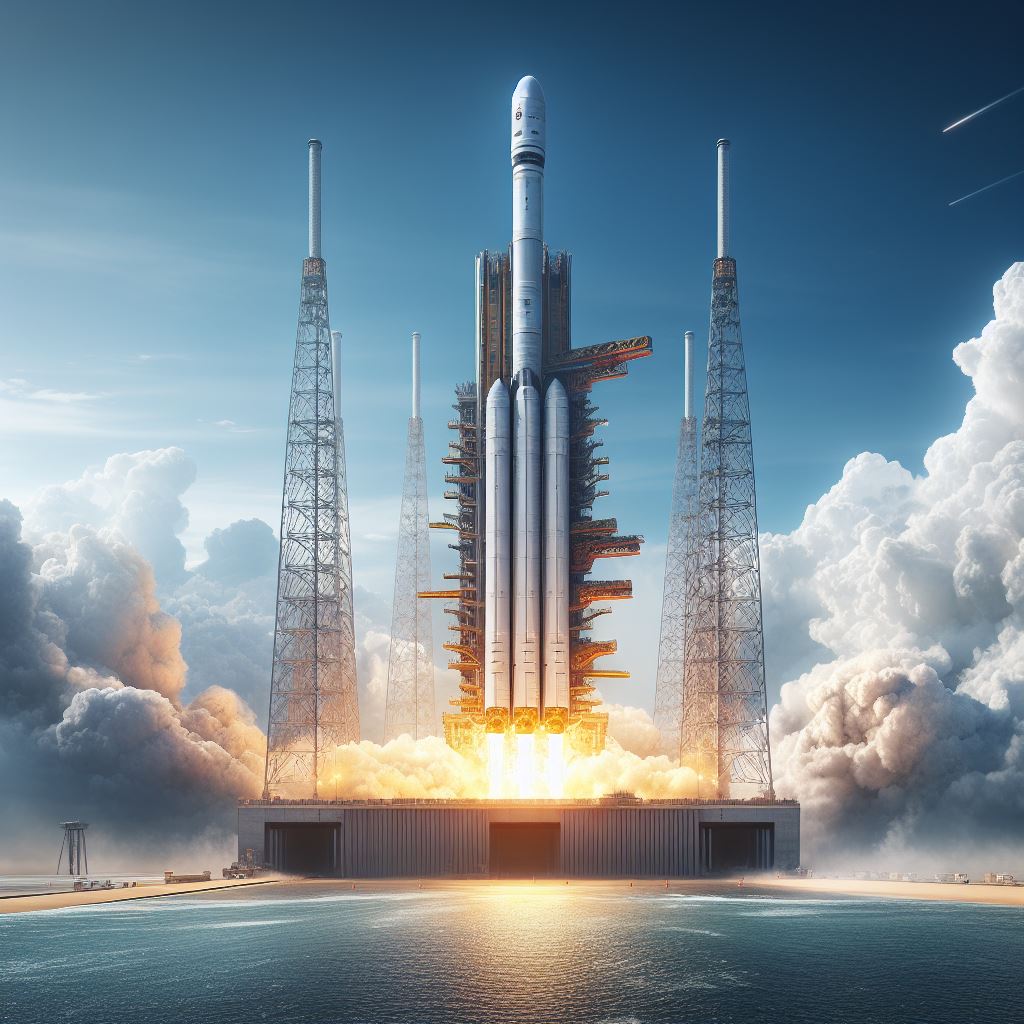· deep dive · 6 min read
SpaceX's Audacious Starship
As the largest and most powerful rocket ever built, it's designed for full reusability and rapid launch turnaround. SpaceX claims it could carry over 100 tons to low Earth orbit at a fraction of current costs.

Revolution or Pipe Dream?
Elon Musk first unveiled his vision for the Starship super heavy-lift reusable launch system five years ago, promising a new era of affordable access to space that would enable the settlement of Mars. Half a decade later, Starship remains very much a work-in-progress, defined as much by setbacks and explosions during development as by its seemingly boundless ambition.
As an observer of the space industry, it’s fascinating to see the evolution of Starship. Part of the excitement stems from its potential to transform our relationship with space if realized as envisioned. Yet, there is a natural skepticism, wondering if Starship will join the list of overhyped projects that never fully materialize.
This article aims to provide a balanced view of Starship, assessing both its revolutionary potential and the formidable challenges it faces.
The Promises and Potential of Starship
Starship’s promised capabilities are impressive. As the largest and most powerful rocket ever built, it’s designed for full reusability and rapid launch turnaround. SpaceX claims it could carry over 100 tons to low Earth orbit at a fraction of current costs.
Its intended use of in-orbit refueling opens up possibilities for crewed lunar landings, ultra-fast Earth travel, propellant depots in space, and even permanent settlements on Mars. The Starship spacecraft itself is 50 m (165 ft) tall and 9 m (30 ft) in diameter. The rocket consists of the Super Heavy first-stage booster and the Starship second-stage spacecraft, both of which are to be recovered and reused.
When stacked, Starship is 121 m (397 ft) tall with a mass of around 5 million kg (11 million lb) fully fueled. Both rocket stages use SpaceX’s Raptor engines, burning liquid oxygen and methane to generate a maximum thrust of 75.9 MN (17 million lbf) at liftoff. The Raptor engine operates at a chamber pressure of 300 bar, higher than any previous operational rocket engine.
Should SpaceX demonstrate these capabilities, Starship could:
- Reduce launch costs, increasing space access: By reusing the booster and ship and refueling in orbit, the marginal cost per launch could drop below $10 million according to SpaceX.
- Deploy thousands of Starlink satellites, far more than on current rockets. Starlink revenues help fund Starship’s development.
- Land 100+ tonnes on the Moon, supporting ambitious exploration and research projects from NASA and other space agencies.
- Enable a permanent, sustainable human presence on Mars through regular crew and cargo flights.
In essence, Starship could expand humanity’s space horizons more than any project since Apollo 11. The impacts would go beyond space exploration to influence education, technology, and space commerce.
The Rocky Road Ahead
However, Starship’s success is not a given. Its development has seen as many explosions as progress. SpaceX follows a “design by blowing stuff up” approach that prioritizes rapid iteration over predictable timelines. While productive, it underscores the daunting engineering challenges that remain.
Starship faces immense complexity across technical, financial, legal, and regulatory fronts:
- Mastering reusability and rapid refurbishment/refueling across both booster and spacecraft stages. Operational know-how will be hard-earned.
- Demonstrating reliable life support, radiation shielding and habitation modules for long duration crewed Mars missions. Significant technological advances are still required.
- Establishing a profitable business case to financially sustain ambitious development plans amid rising launch industry competition. Market uncertainty persists.
- Achieving constant regulatory approvals for crewed flights and Mars exploration plans. This will require relentless vigilance and open communication with agencies.
- Ensuring sustainable spaceport operations and community relations amid frequent testing. This balances progress with quality-of-life impacts to local residents and wildlife.
Recent Development Setbacks
True to its “test fast and blow stuff up” ethos, Starship’s development path has been turbulent. Its first orbital launch attempt in April 2023 ended in failure, with the vehicle spinning out of control and exploding before reaching orbit. The FAA grounded further launches pending an investigation into the mishap. SpaceX had to implement over 60 corrective actions before being cleared for another try.
The second attempt in November 2023 saw the Super Heavy booster explode shortly after separating from the Starship upper stage. While disappointing, each flight provides learning to improve future design iterations. The outcomes underscore, however, that Starship has significant maturing left before it meets Musk’s goals for full reusability and extremely low launch costs.
So Where Does Starship Go from Here?
While Starship’s promise remains alluring, its true impact might only be clear in a decade or more. Its near future depends on achieving reliable, rapid reuse of both rocket stages along with successful orbital refueling demonstrations.
Early successes could catalyze space investment, while setbacks may lead some to dismiss Starship’s goals as unrealistic. Regardless, its pursuit drives valuable progress in engineering and may open up economic opportunities both on and beyond Earth.
Even moderate gains towards Starship’s vision could expand access for science and forge a more hopeful path for humanity’s role beyond our planet. The coming years will reveal whether Starship revolutionizes space exploration or remains merely an ambitious pipe dream.
Revolutionary Potential
Should Starship fulfill its technical vision, the economic implications are profound. The rocket would enable new space industries by reducing launch costs 100-fold from the current $5,000 per kilogram of payload. Some potential catalytic effects include:
- Flexible, on-demand access to space transforms satellite deployment economics. Businesses can launch novel constellations faster and cheaper than ever before. This drives space-based services growth.
- Frequent rides to orbit facilitate emerging markets like space tourism, satellite servicing, asteroid mining, and orbital manufacturing. Reduced launch costs unlock these opportunities.
- Large payload capacity enables new science missions. Giant space telescopes, Io probes, Mars sample returns and Neptune flybys become financially feasible. Discovery accelerates.
- Permanent settlements on Mars offer hope for backing up the human species. Industrializing the red planet provides new sources of resources and economic growth. This buffers Earth’s environmental strains.
The Power of an Audacious Vision
Ambitious engineering visions often stir skepticism rather than optimism. Yet history shows that when technical barriers are surmounted, new technologies can profoundly improve lives. Electric cars, mobile phones and commercial aviation were all once considered unrealistic dreams.
Starship’s epic goals echo president Kennedy’s improbable deadline for reaching the moon. That vision spawned technologies still benefiting humanity decades later. Whether Starship succeeds or not, straining beyond the limits of current capability typically yields progress. At minimum, spinoff effects from its development will likely advance rocket, material, and life support technologies substantially.
And should SpaceX defy the naysayers by creating regular, affordable access to space? Starship’s legacy may be measured over generations, not years. Our great-great grandchildren might view it as the driving force expanding humanity’s economic sphere beyond this lone planet.
Challenges Notwithstanding
None of this discounts Starship’s daunting hurdles ahead. SpaceX has its work cut out to address near-term operational, financial, and regulatory challenges on the long road to Mars habitats. Criticisms will intensify if progress stalls. Weighing its epic vision against today’s prototyping struggles likely requires some measured patience before casting judgment.
It took a decade after Kitty Hawk for aircraft development to truly take off. Realizing Starship’s goals may follow a similarly long arc punctuated by setbacks. Its epic scale almost guarantees volatility amid the stability aerospace markets typically prefer. But just maybe if SpaceX can demonstrate U.S.-style innovation fueled by private capital? Starship emerges as the flagship opening humanity’s spacefaring future.



